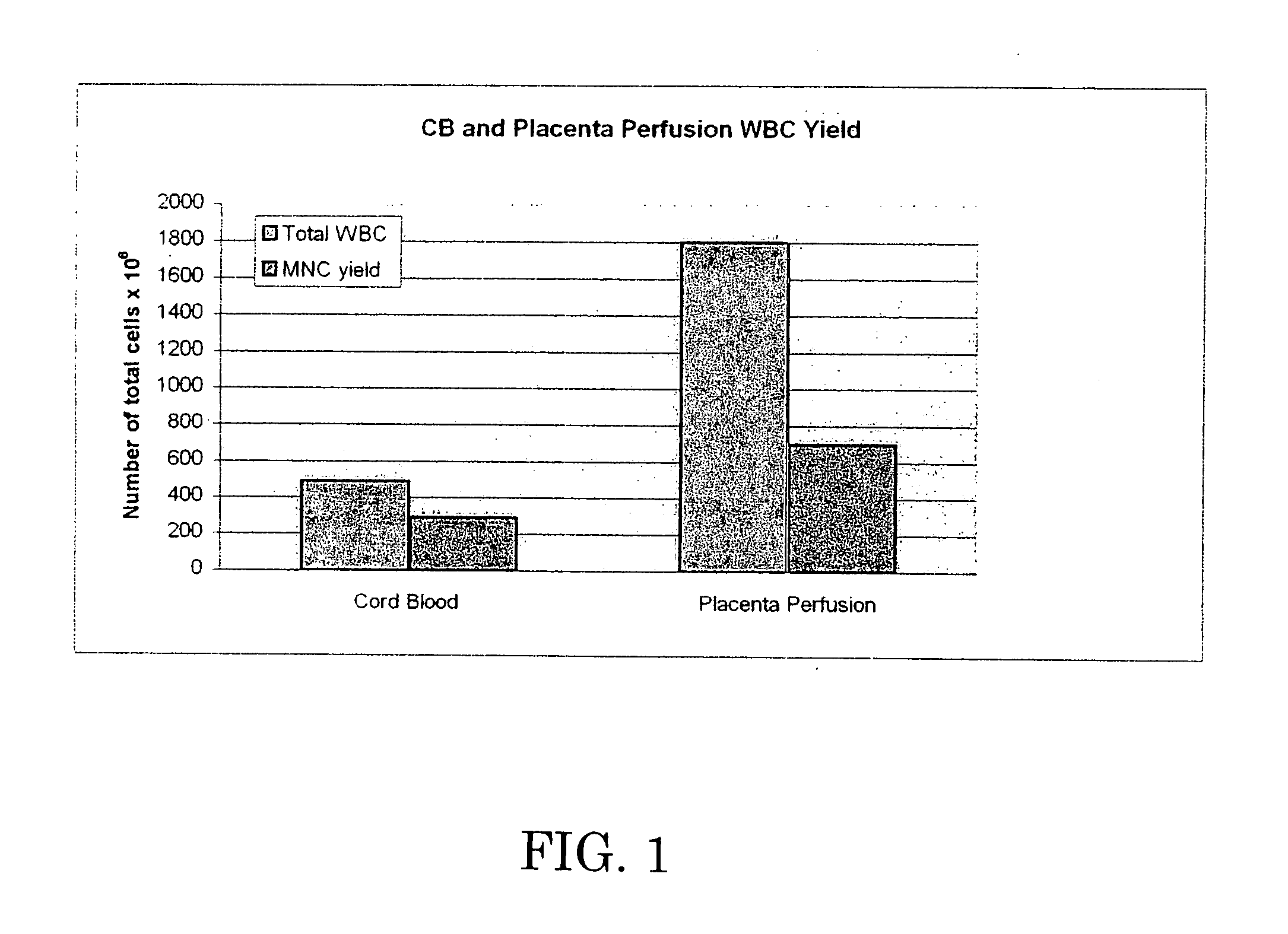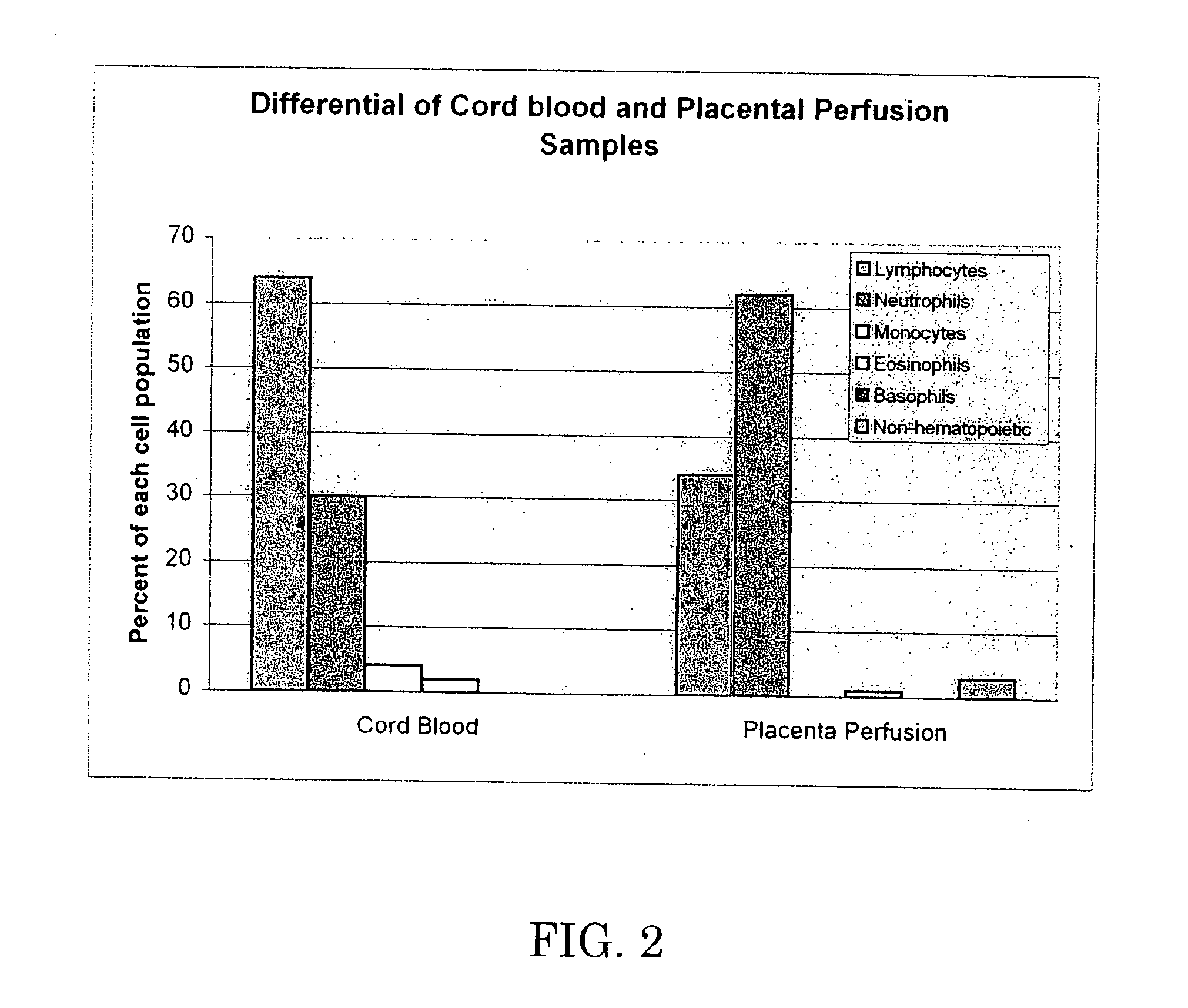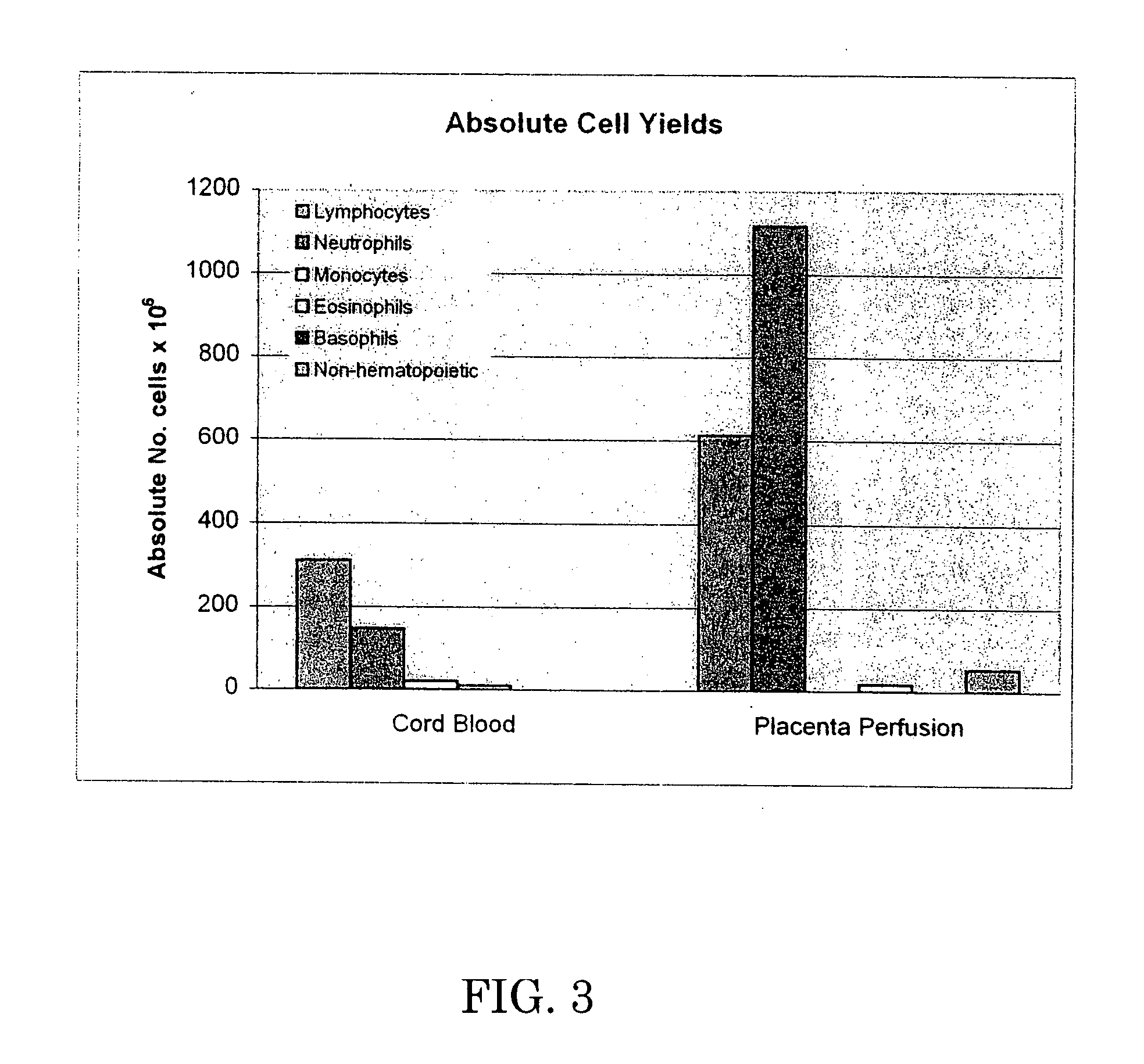Pulsatile perfusion extraction method for non-embryonic pluripotent stem cells
a technology of pulsatile perfusion and stem cells, which is applied in the field of pulsatile perfusion extraction method for nonembryonic pluripotent stem cells, can solve the problems of contaminated or non-viability of one or more federally approved embryonic stem cell lines, the yield of umbilical cord is only sufficient for pediatric transplantation, and the use of embryonic stem cells
- Summary
- Abstract
- Description
- Claims
- Application Information
AI Technical Summary
Problems solved by technology
Method used
Image
Examples
example 1
Extraction of Stem Cells by Pulsatile Perfusion of Baboon Placenta
[0059] An obstetrician obtained a 50 ml sample of blood from the umbilical cord by syringe during delivery of an infant baboon by cesarean section.
[0060] The placenta was then placed into the organ chamber of a RM3 Kidney Perfusion System (Waters Medical Systems, Rochester, Minn.), and the placenta arteries were cannulated using with a 3 mm, straight cannula manufactured by Waters Medical Systems. The cannulas were tied in place with 0-Silk ties. Prior to perfusion, the perfusion circuit was primed with a perfusion solution comprising RPMI 1640 with Gluconate Tissue Media and 10,000 units of heparin.
[0061] Pulsatile perfusion was commenced using the same perfusion solution. The systolic pressure was set at 100 mm Hg with a pulse rate of 70 beats per minute at room temperature. After 20 minutes of pulsatile perfusion, the perfusate was transferred from the perfusion circuit into a sterile container and both the perf...
example 2
Pulsatile Perfusion of Human Placenta
[0062] Informed consent was obtained from an expectant human female prior to delivery. Approximately 37 cc of cord blood was extracted by syringe from the unbilical cord after delivery of the infant but prior to expulsion of the placenta. The placenta and umbilical cord were obtained from the female shortly after delivery. The placenta was placed into the organ chamber of a RM3 Kidney Perfusion System, and perfused in accordance with the procedures and conditions of Example 1, except that Belzers Machine Perfusion Solution was used in place of the perfusion solution (RPMI 1640 with Gluconate Tissue Solution) used therein.
[0063] The 37 cc blood sample and the perfusate were analyzed by flow cytometry. Test data is set forth below in Tables 2-6, which are graphically shown in FIGS. 1-5.
[0064] Table 2 and FIG. 1 demonstrate that perfusion of the umbilical cord / placenta can extract a significant amount of white blood cells, while Table 3 and FIG. ...
PUM
 Login to View More
Login to View More Abstract
Description
Claims
Application Information
 Login to View More
Login to View More - R&D
- Intellectual Property
- Life Sciences
- Materials
- Tech Scout
- Unparalleled Data Quality
- Higher Quality Content
- 60% Fewer Hallucinations
Browse by: Latest US Patents, China's latest patents, Technical Efficacy Thesaurus, Application Domain, Technology Topic, Popular Technical Reports.
© 2025 PatSnap. All rights reserved.Legal|Privacy policy|Modern Slavery Act Transparency Statement|Sitemap|About US| Contact US: help@patsnap.com



